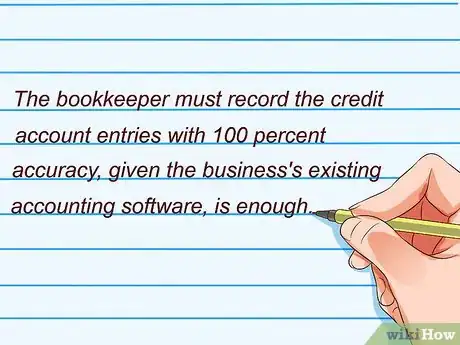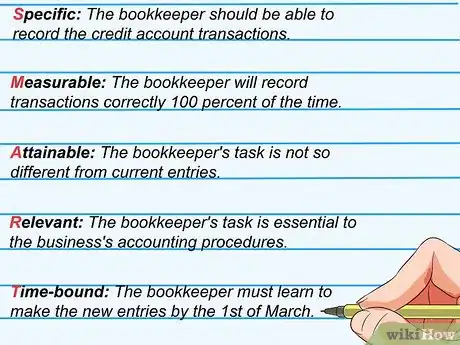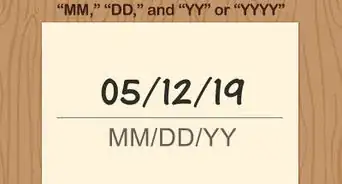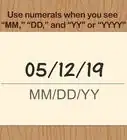This article was co-authored by Michael R. Lewis. Michael R. Lewis is a retired corporate executive, entrepreneur, and investment advisor in Texas. He has over 40 years of experience in business and finance, including as a Vice President for Blue Cross Blue Shield of Texas. He has a BBA in Industrial Management from the University of Texas at Austin.
wikiHow marks an article as reader-approved once it receives enough positive feedback. In this case, 100% of readers who voted found the article helpful, earning it our reader-approved status.
This article has been viewed 194,335 times.
Developing a training plan or lesson curriculum will include a lot of detailed and specific information, depending on what is being taught. While the specific training steps are necessary, establishing the training objectives from the very beginning will help to ensure successful training. The training objectives must be clear and relevant, and most importantly, they must be communicated with the audience that will receive the training. Write training objectives down, and include them in the training manual or curriculum.
Steps
Planning Your Objectives
-
1Identify the overall purpose of the training. Before doing anything else, you must identify the purpose, or the desired outcome, of the training. Usually, training is designed to close a performance or knowledge gap possessed by employees or students. This gap is the difference between the current skills or knowledge of student and the skills or knowledge required of them. Identify what you want out of your training and then go from there to fill out the rest of your training objective list.[1]
- For example, imagine that your business must train a bookkeeper to record a new type of credit account being offered to customers. The purpose of the training is to train the bookkeeper such that they are capable of efficiently and accurately recording the new entries.
- The performance gap here would be that the bookkeeper already has knowledge of all of the business's other bookkeeping entries, but lacks the knowledge and skill to make the new type of entry.
-
2Describe the expected performance. The task that will be taught during the training must be clearly defined. A written objective must contain an action verb that can be seen and measured. Use words that tell the student exactly what he or she must do, and avoid any language that might be ambiguous or subjective.
- For the previous example, the task would be to record the new accounting entries.
Advertisement -
3Explain the conditions under which the task will be performed. An objective must include a description of circumstances. Provide details that describe under what conditions the task or tasks will take place. In other words, what must happen before the task needs to be completed? Include what tools and support might be used, including textbooks, forms, tutorials, and other conditions. If the task is outdoors, environmental conditions will need to be addressed.[2]
- For the previous example, the conditions might be when a customer with the new account type makes a purchase. In addition, another condition might be that the bookkeeper must know how to record the entry in the business's accounting software.
-
4Set standards. Describe what the student will be expected to achieve in order to have met the training objective. The minimal acceptable standards must be communicated in the written training objectives. Define how the standards will be measured and evaluated.
- Standards will be performance goals, like doing a task in a set amount of time, getting a certain percentage of tasks right, or completing a certain number of tasks in a given time or at a certain magnitude.
- Training standards usually do not require a mastery or perfection of the task.
- For the previous example, this would be not just the employee must record the entries, but must do so in an accurate and expedient manner.
Writing Your Objectives
-
1Use clear, direct language. Write objectives such that there is a clear and measurable goal identifiable in the wording of the objective. That is, don't use indirect or passive word like "understand" or "some." Instead, use direct wording that conveys specific figures or actions that needs to be learned. Doing so will make sure that the rest of your training, including materials, methods, and content, is cohesive.
- In addition, this type of wording adds to your ability to eventually measure your training successes.
- Clear objectives gives the student the ability to follow their own progress and to know what to expect from the training and its outcome.
- For the bookkeeper example mentioned in the other parts, this would be something like, "The bookkeeper will be able to successfully record credit account entries."
-
2Link objectives to real-world events. Objectives are best understood in the context of real-world events. Always include what would occur first to make the employee or student perform the task in question. Then, link the task itself to the desired, real-world result of that task. This helps the student keep what they are learning in perspective.[3]
- For the previous example, this might be that the entry of the new type of credit account will be made to account for a new service offered to customers, designed to increase sales with repeat customers. The proper entry of the data must be stated as essential to the financial health of the business.
-
3Be specific about what constitutes the standard level of performance. The standard of performance should be a set number or figure. It could be a percentage of correct actions, a speed of task performance, or another, measurable metric of performance. In any case, this number should be clearly identified in the objective.
- For the previous example, this could be that the bookkeeper must learn to make the entries with 100 percent accuracy. For other tasks, the percentage may be lower, but accounting tasks should be as close to perfect as possible.
-
4Make your objectives as concise as possible. Keep your objective to one sentence. This keeps your objectives concise and easily understandable. Any longer or more complicated tasks can be broken into multiple, smaller tasks. Any long, complicated tasks will be more difficult to teach and quantify.[4]
- For the previous example, stick to the basics. Writing that the bookkeeper must record the credit account entries with 100 percent accuracy, given the business's existing accounting software, is enough.
Making Objectives Quantifiable
-
1Use the SMART acronym to make sure the training objective can be evaluated. SMART stands for specific, measurable, attainable, relevant and time-bound. This system has been used by business and government leaders and training managers to institute and teach effective training programs.
- Specific: State exactly what the learner should know how to do with specific objectives. All objectives should be clearly defined and not subject to debate or interpretation.
- Measurable: Observe and quantify the behavior with measurable objectives. The objectives should be consistent for each learner, and subject to standard evaluation.
- Attainable: Make sure the task or action is something that can actually be achieved with attainable objectives. Setting learners up for failure will result in unmet objectives and demoralized students.
- Relevant: Determine that this task is important and necessary with relevant objectives. There should be nothing arbitrary or optional about the tasks written in the objectives.
- Time-bound: Set achievable deadlines and management schedules with time-bound objectives. There can be no open-ended tasks in effective objectives. Set and enforce deadlines.
- Using the bookkeeper example from other parts, the SMART acronym would be applied in the following way:
- Specific: The bookkeeper should be able to record the credit account transactions.
- Measurable: The bookkeeper will record transactions correctly 100 percent of the time.
- Attainable: The bookkeeper's task is not so different from current entries.
- Relevant: The bookkeeper's task is essential to the business's accounting procedures.
- Time-bound: The bookkeeper must learn to make the new entries by the 1st of March.
-
2Avoid using objectives that cannot be measured. Try not to have objectives that you cannot measured objectively, such as making a student "appreciate" or "be aware" of something. While these are no doubt important, you have no real way of measuring the success of teaching a student these things.[5]
- For the previous example, don't write an objective like, "the bookkeeper must be aware of how the new entries are made." Make the objective more direct with "they must be able to record the new entries."
-
3Include an objective for evaluation. Evaluate the students, and give them an opportunity to evaluate the training. Some part of the training should be a test of the knowledge gained during the training. After all, knowledge is useless without experience and practice. Remember that this may require multiple repetitions before the performance standard can be reached.
- For the previous example, this might be that the bookkeeper will be given several hypothetical examples of this type of transaction and will be asked to record them correctly.
-
4Finalize your training objective. Using all of the aforementioned criteria, refine your training objective until it is exactly the way you want it. Again, make sure all aspects of the objective are clear and measurable.
- For the previous example, an example would be, "The bookkeeper, given the business's existing accounting software, must be able to record the new credit account entries with 100 percent accuracy by the 1st of March."
References
- ↑ http://www.slideshare.net/DavidGibsonEureka/how-to-write-training-objectives
- ↑ http://www.slideshare.net/DavidGibsonEureka/how-to-write-training-objectives
- ↑ http://www.slideshare.net/DavidGibsonEureka/how-to-write-training-objectives
- ↑ http://www.slideshare.net/DavidGibsonEureka/how-to-write-training-objectives
- ↑ http://www.slideshare.net/DavidGibsonEureka/how-to-write-training-objectives
About This Article
To write training objectives, start by identifying the purpose of your training, such as teaching a bookkeeper how to record transactions for a new type of credit account. Then, set standards as to how the objective is successfully met, such as doing a task accurately within a certain amount of time. Additionally, determine a specific target number or figure that measures the level of performance. For example, you could measure performance by setting a target that the bookkeeper must learn how to record new entries with 100 percent accuracy. For more tips from our Business co-author, like how to link objectives to real-world events, read on!











































































